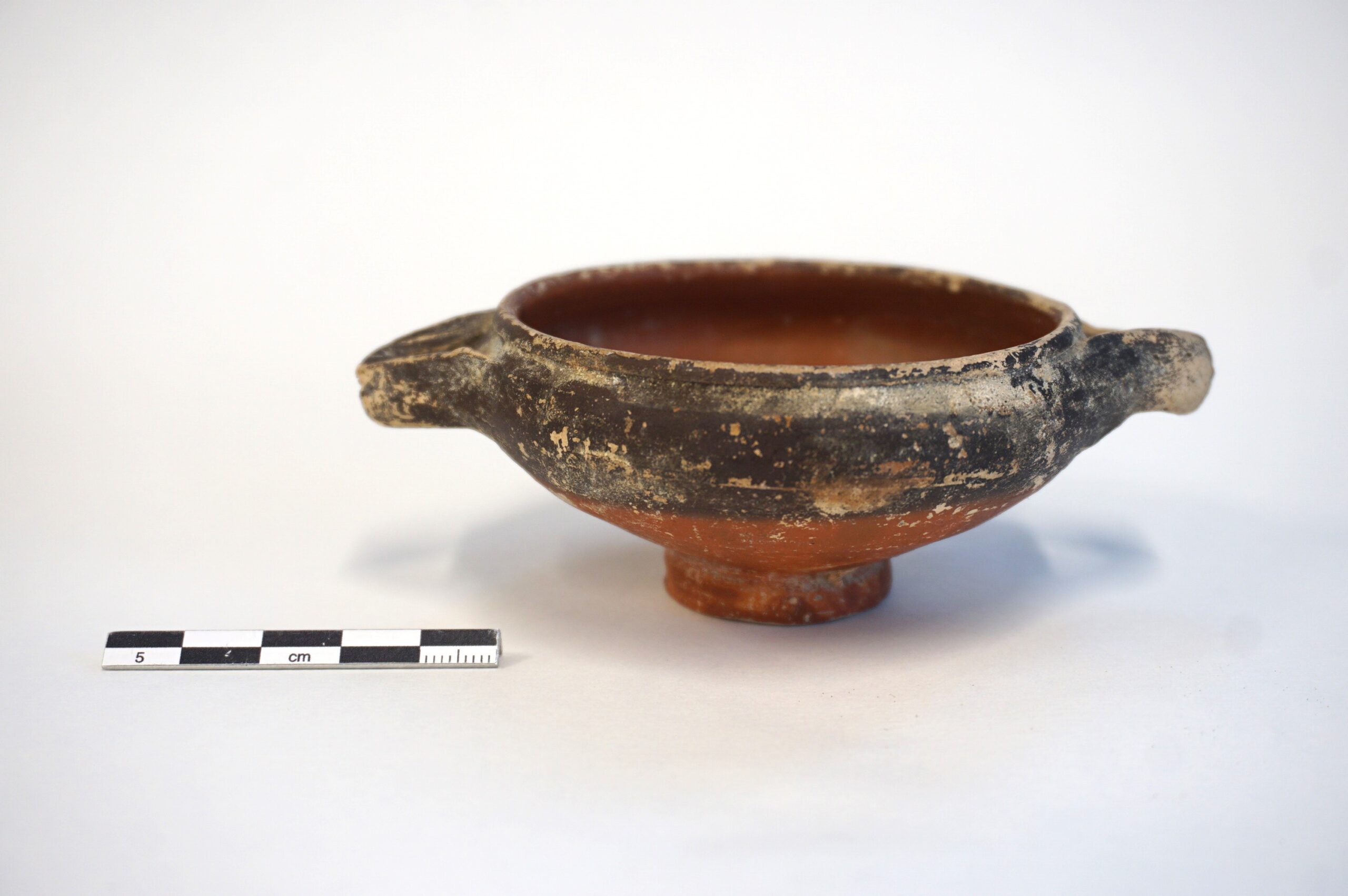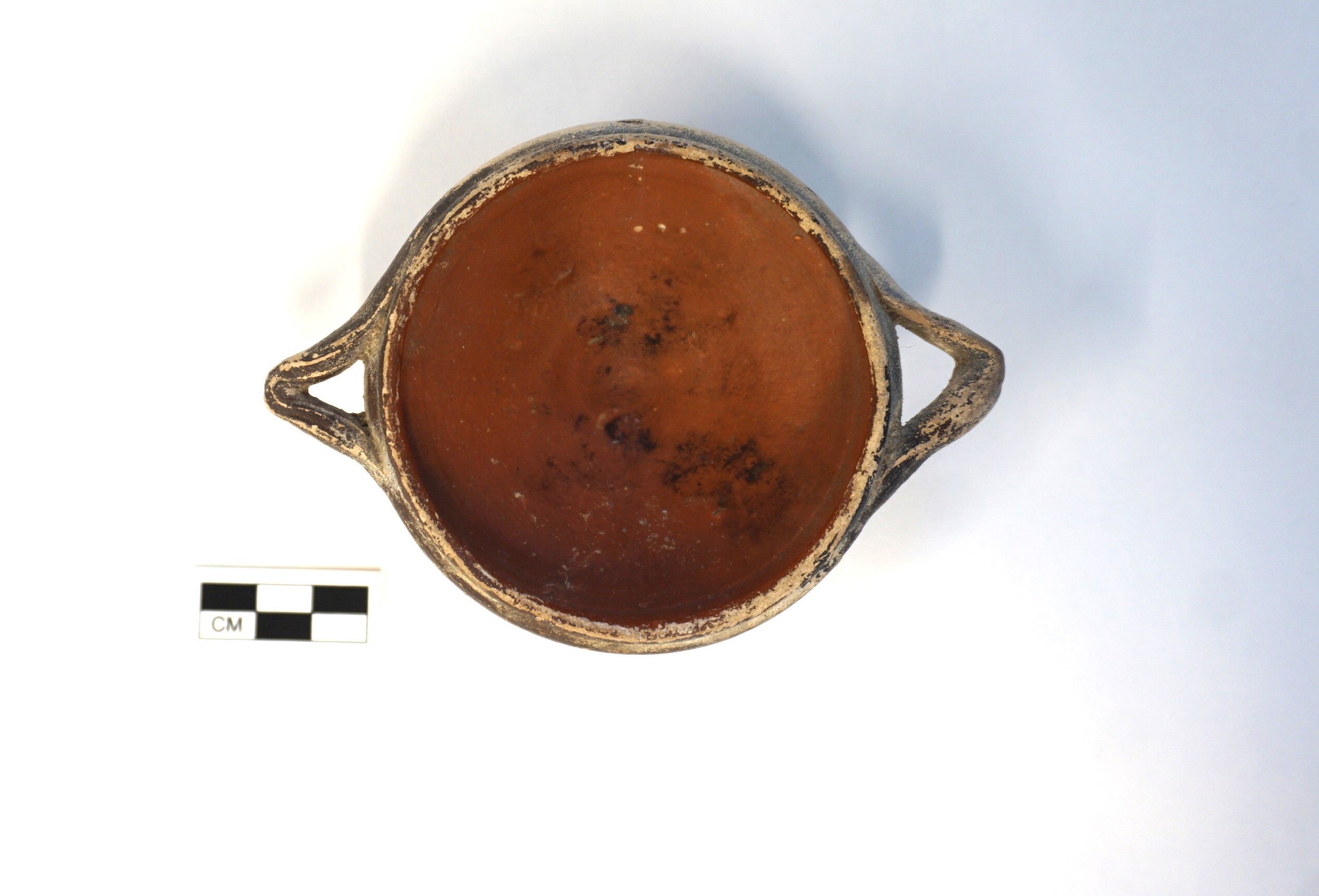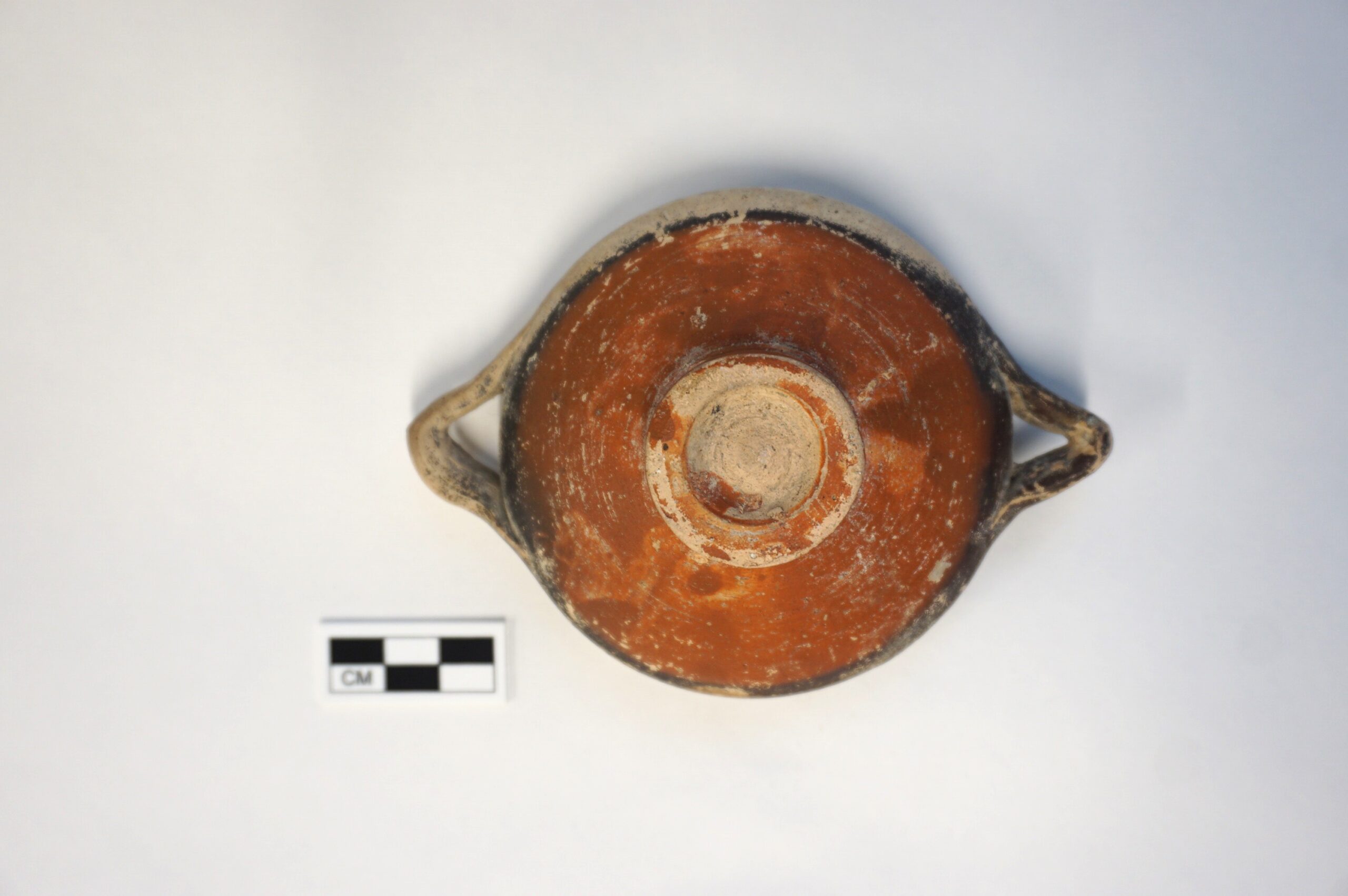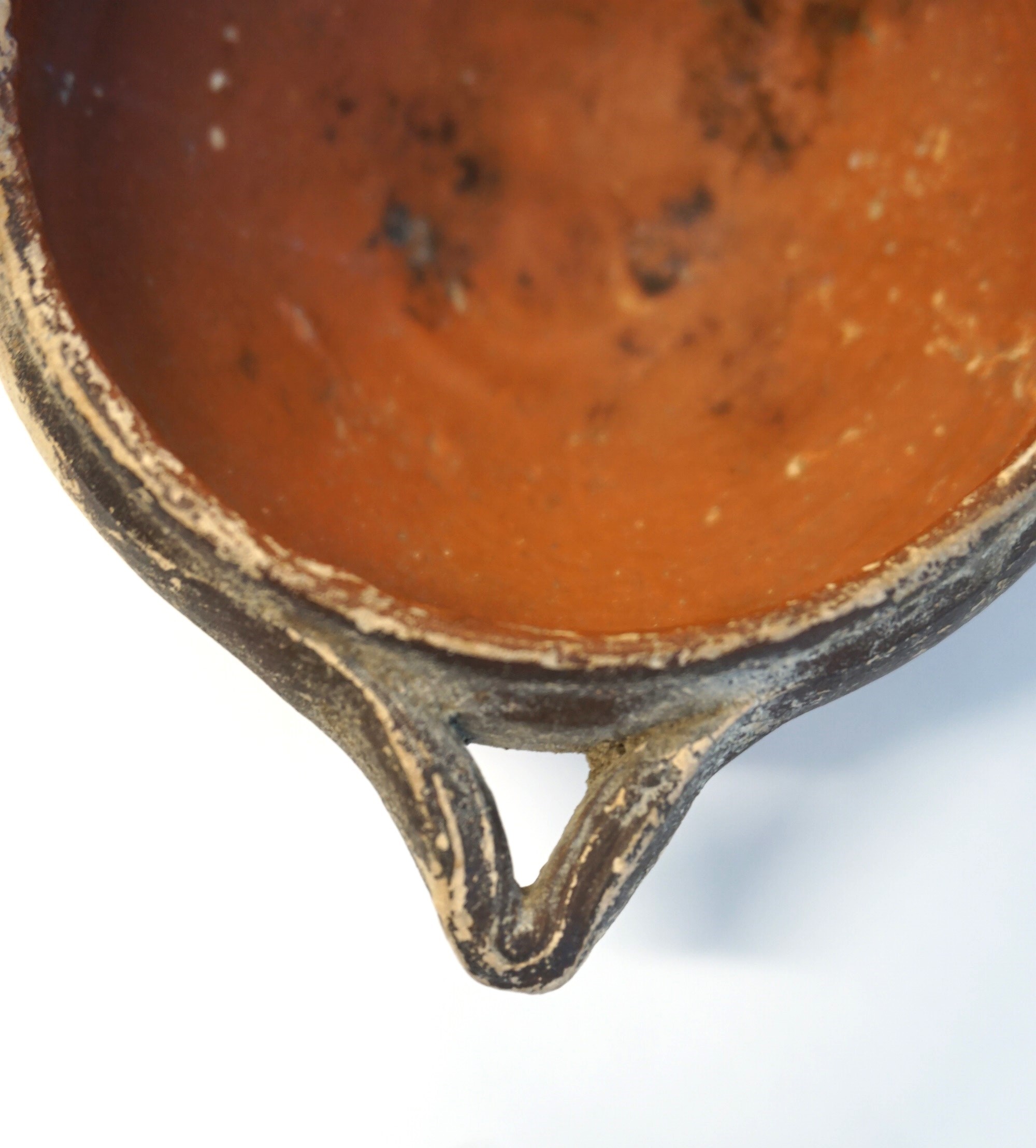For a 3D model made by the Virtual Curation Lab at Virginia Commonwealth University, see https://skfb.ly/oB6BW
Two-handled cup
AWG2022.01.02
Greek (Rhodian)
Hellenistic Period, 250-150 BCE
Material: Ceramic
Technique: Wheelmade
Weight: 69g
Dimensions: Rim diam. 7.9 cm (11.8 cm with handles), base diam. 3.2 cm, height 3.3 cm
Condition: Good, slip is heavily worn in some places
Provenance: Nisyros (island in the southeast Aegean)
Donor: Fred Morgan, III
Date of acquisition: 09/15/2022
Research by: Emily Dixon, '23
Description:
This two-handled cup is stemless and has a ring foot, a conical body, a short upright rim, and horizontal ribbon handles. The fabric of the clay is a light gray or very pale brown (10YR 7.5/2).The interior of the cup is covered entirely with red slip and shows visible wheel marks. There is a small amount of unidentified black residue in the interior as well. The exterior is colored with a band of dark black slip on its top half and red slip on its bottom half. The slip extends over the foot but does not entirely cover the bottom. The cup is in good condition, though the slip is heavily worn in some places.
Comparanda:
Rhodian skyphos from an illicit grave dig on the island of Tilos (Tilos Archaeological Collection, inv. no. 150; Stampolides and Filimonos-Tsopotou, 282); British Museum 1894,1101.554, Rhodian cup from Amathus, Cyprus (https://www.britishmuseum.org/collection/object/G_1894-1101-554).
Discussion:
In style and decoration, this cup falls into the category of Hellenistic "colour-coated ware." The two different slip colors characteristic of colour-coated ware are a result of stacking in the kiln, rather than two different kinds of slip being applied. Cups were inverted and dipped in slip (to coat the interior and top of the exterior) and then stacked on top of one another in the kiln. The pottery then underwent two phases of firing. In the first phase, the oxidizing phase, all of the slip becomes red, while in the second phase, the reducing phase, only the exposed areas turn black. While this technique was utilized to some extent in the Classical period, it is much more prevalent in the Hellenistic era. Stacked 3D-printed models of this cup help to demonstrate the relationship of stacking to the two-toned exterior:
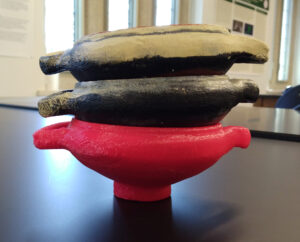
For complete discussion and bibliography, see "Heritage and History: An Investigation of Hellenistic Artifacts from Nisyros," by Emily Dixon, '23.
Bibliography:
John W. Hayes, The Hellenistic and Roman Pottery, Paphos, v. 3 (Nicosia: Department of Antiquities, Cyprus, 1991), 23.
Anneke Keweloh-Kaletta, Sarah Japp, and Benjamin Engels, “Kiln Stacking as a Technique for Polychrome Surface Design - A Pergamenian Innovation?,” in Traditions and Innovations: Tracking the Development of Pottery from the Late Classical to the Early Imperial Periods, vol. 1 (International Association for Research on Pottery of the Hellenistic Period, Wien, 2016), 309.
Andrea M. Berlin and Sandrine Elaigne, “Rhodian Classical-Hellenistic Color-Coated Ware,” The Levantine Ceramics Project, accessed on 13 December 2022, https://www.levantineceramics.org/wares/935-rhodian-classical-hellenistic-color-coated-ware.
Stampolides, Nikolaos Chr, and Melina Filimonos-Tsopotou. Islands Off the Beaten Track...: An Archaeological Journey to the Greek Islands of Kastellorizo, Symi, Halki, Tilos, and Nisyros. Museum of Cycladic Art and Hellenic Ministry of Culture and Tourism, 2011.

